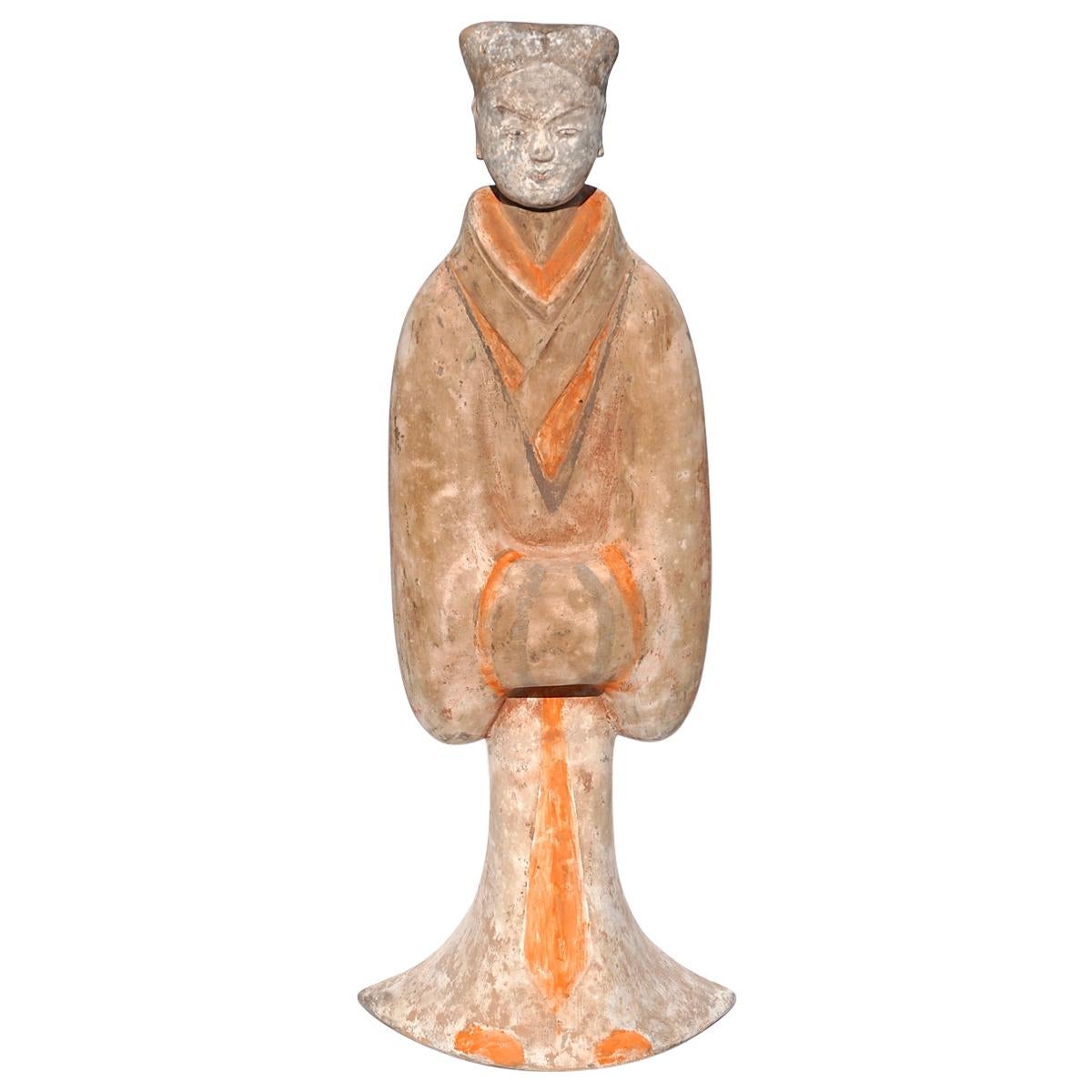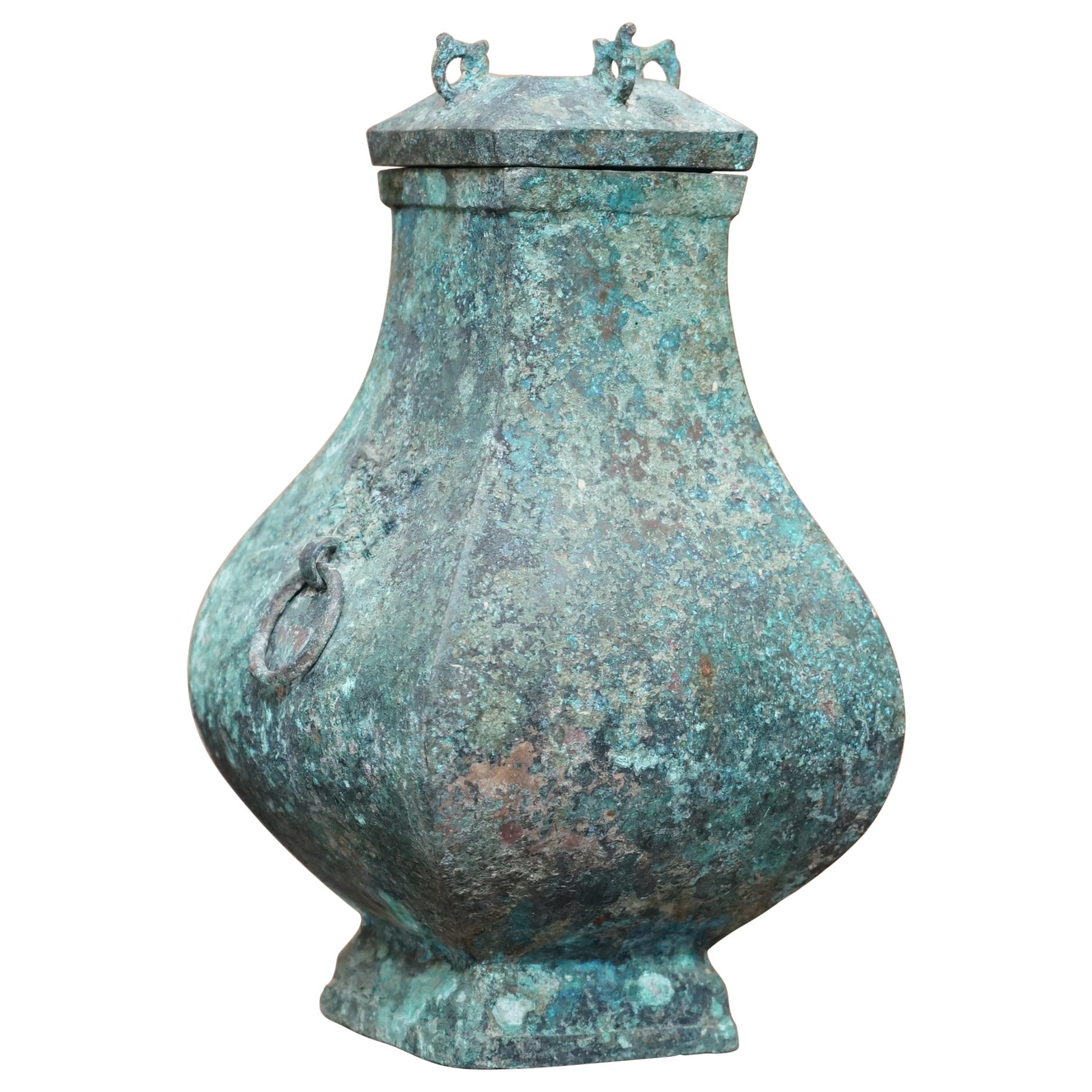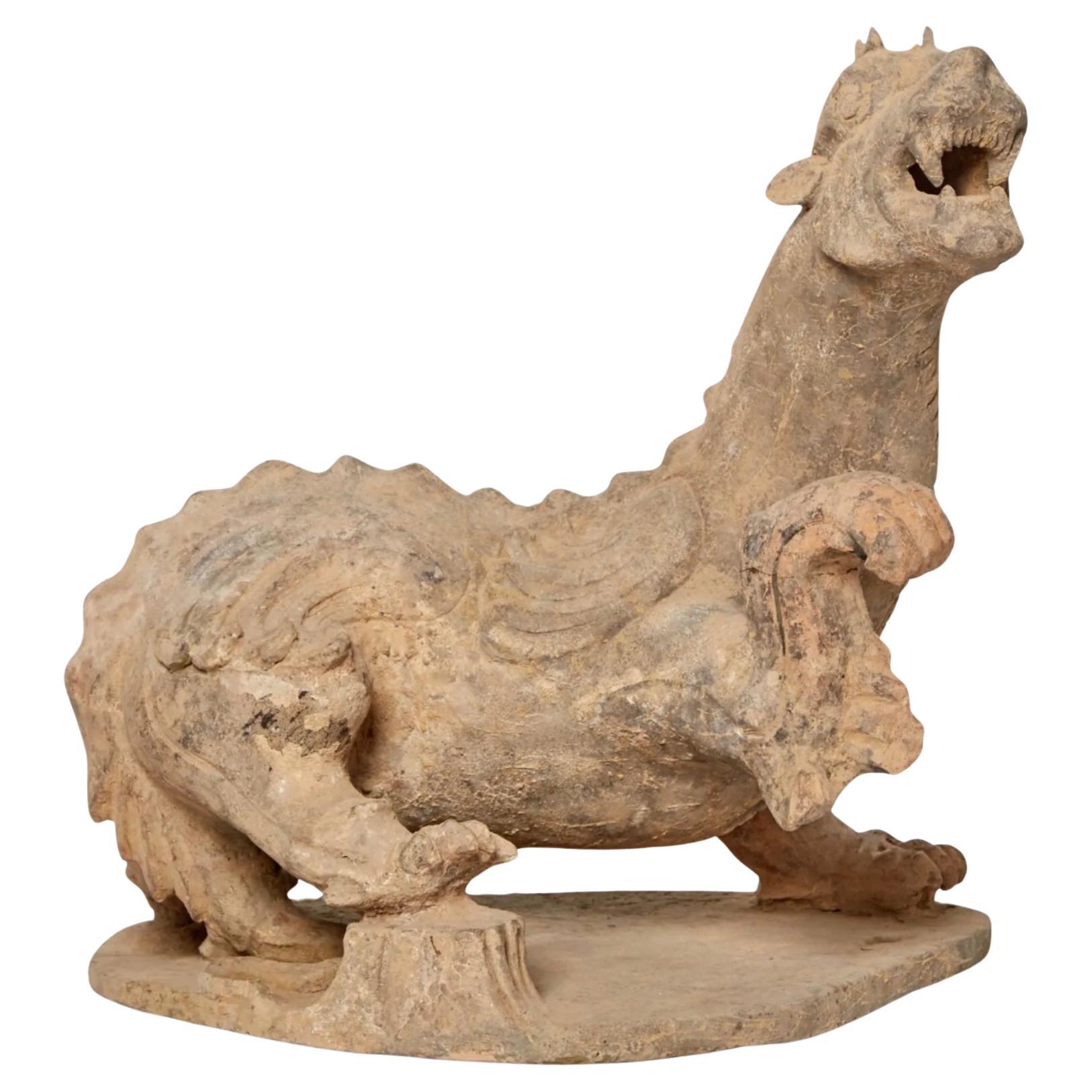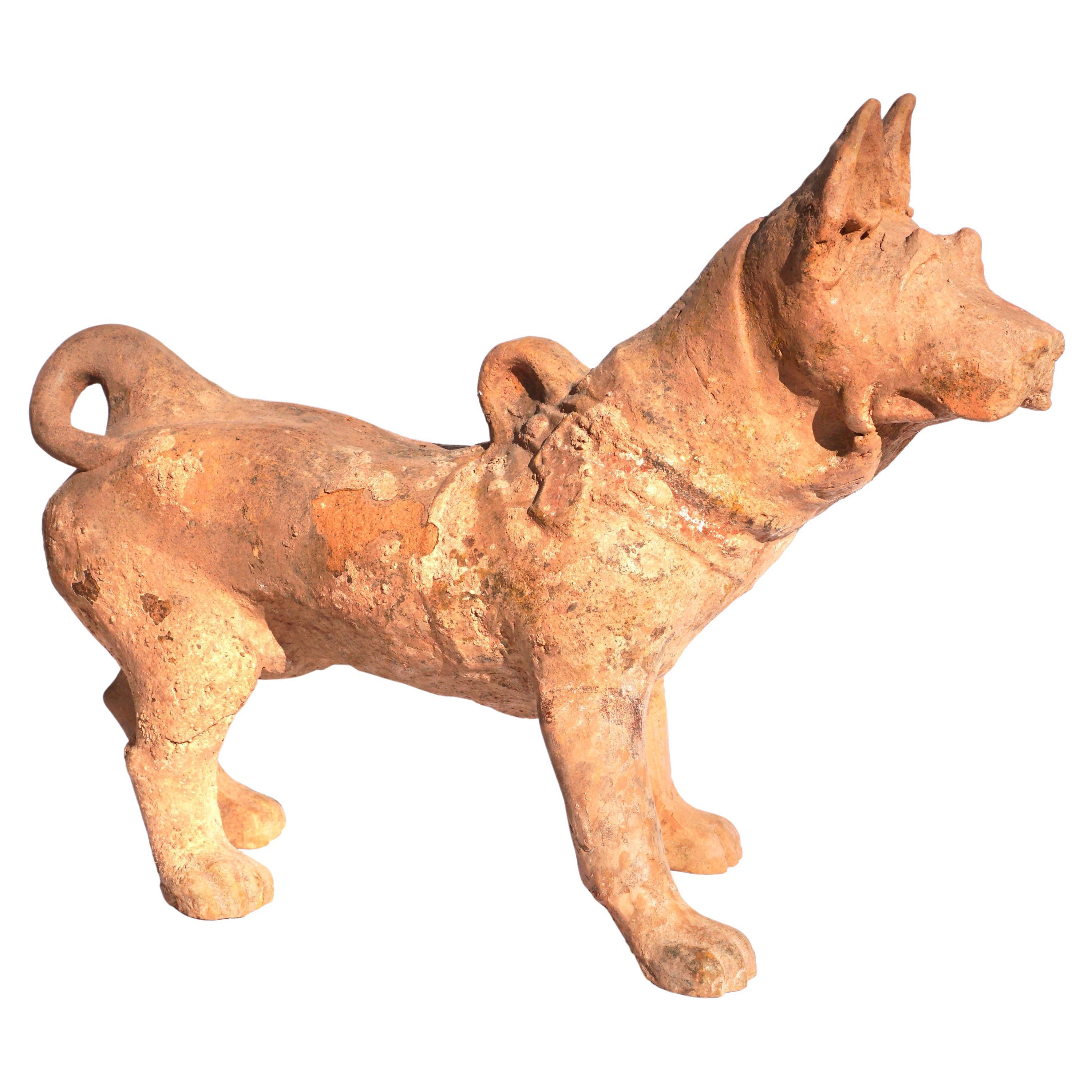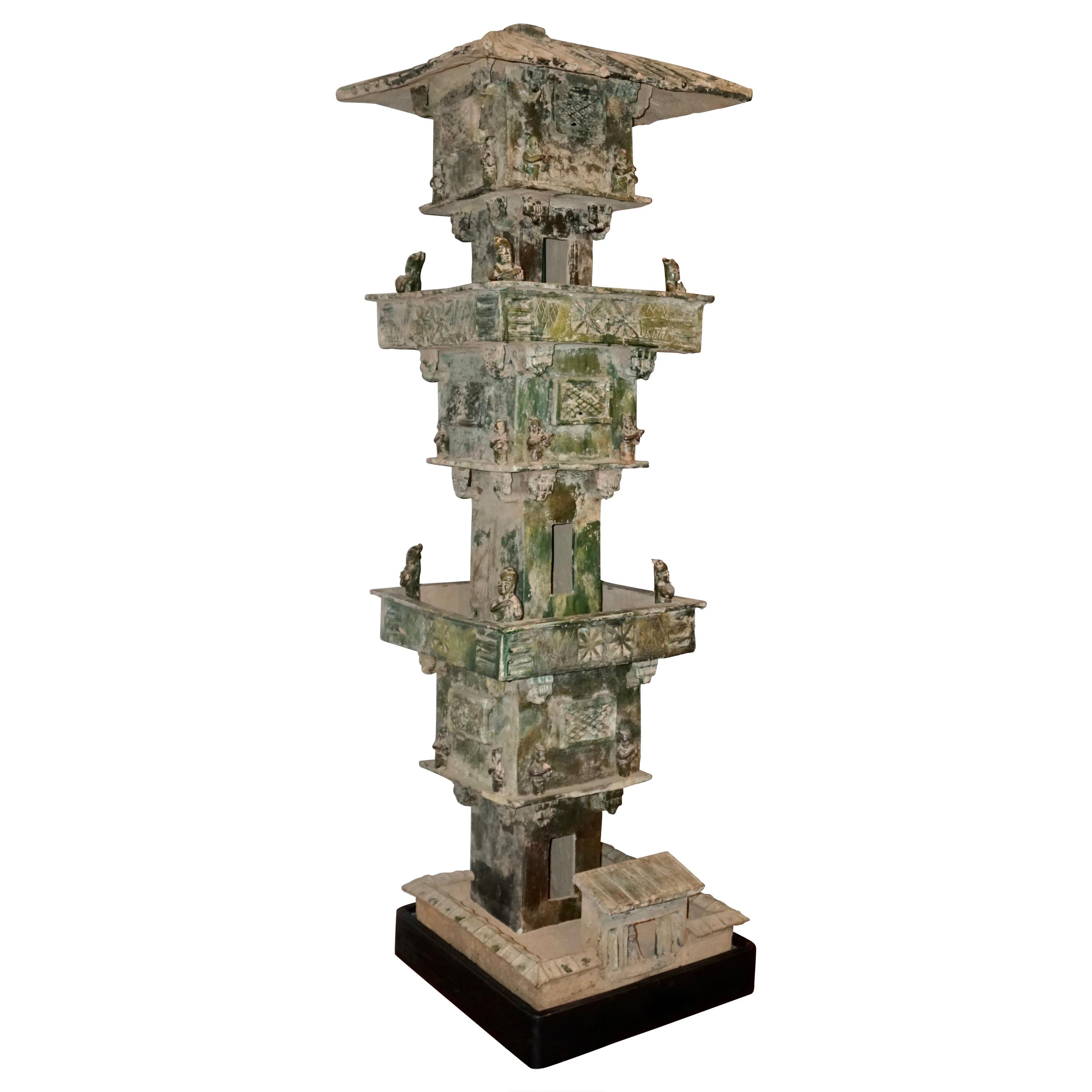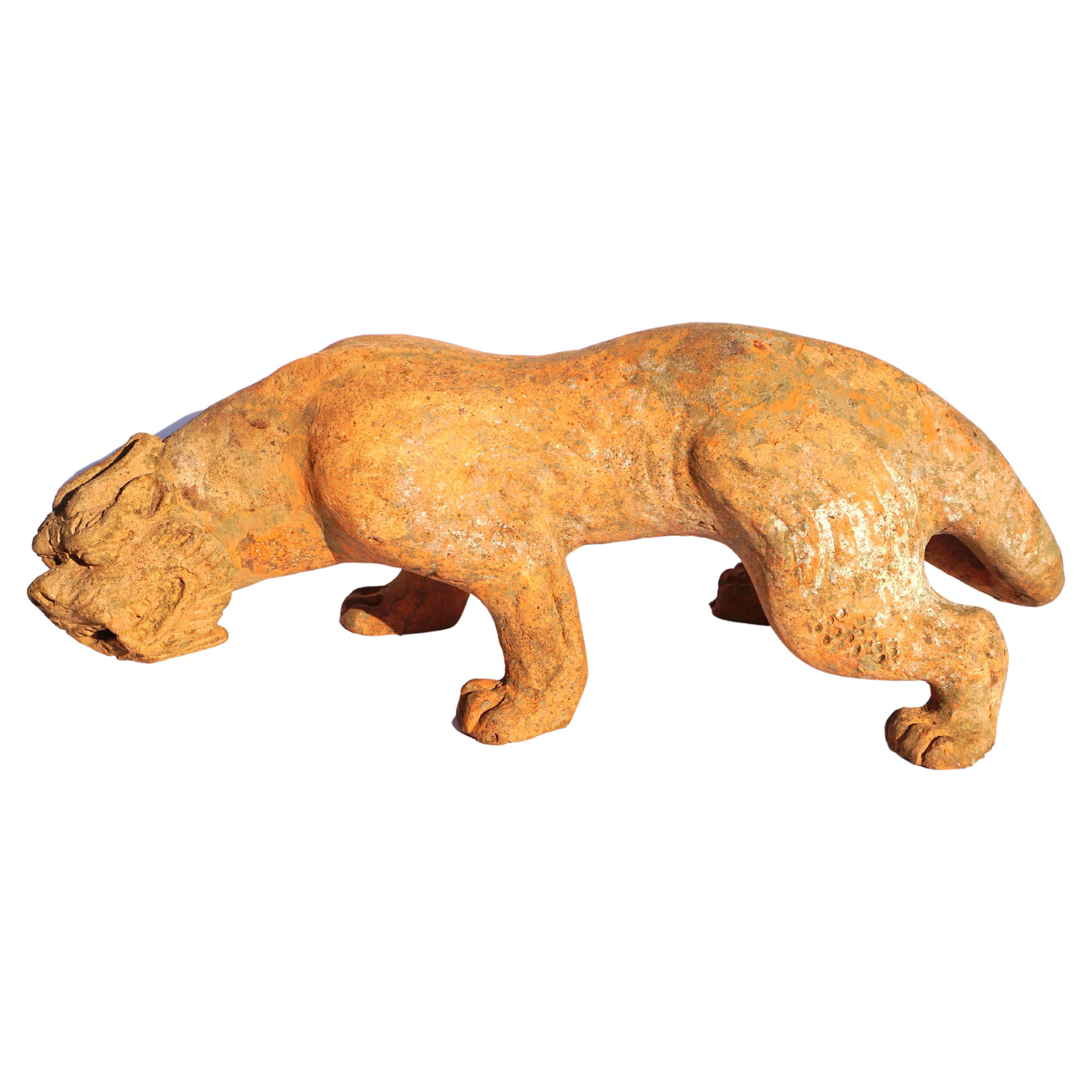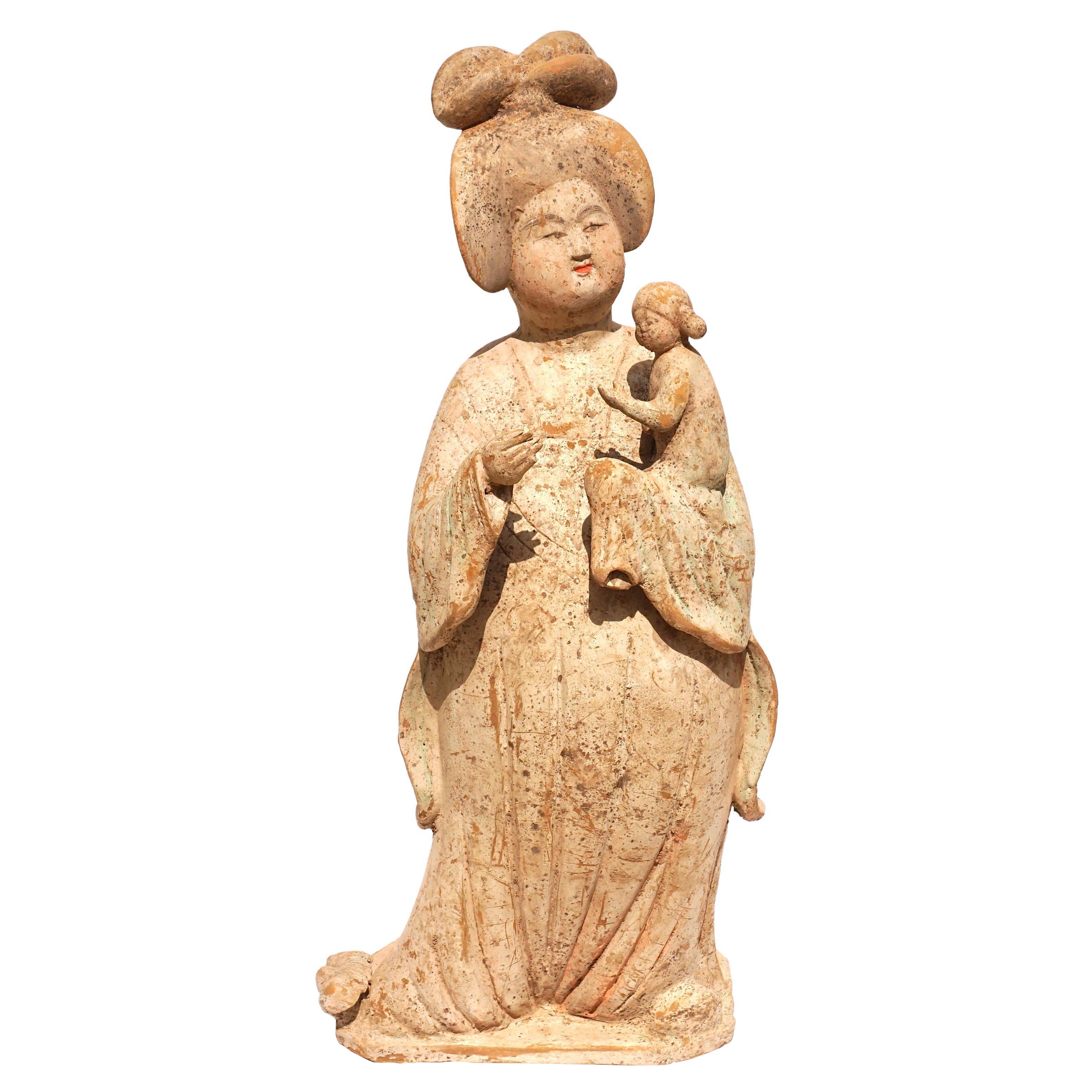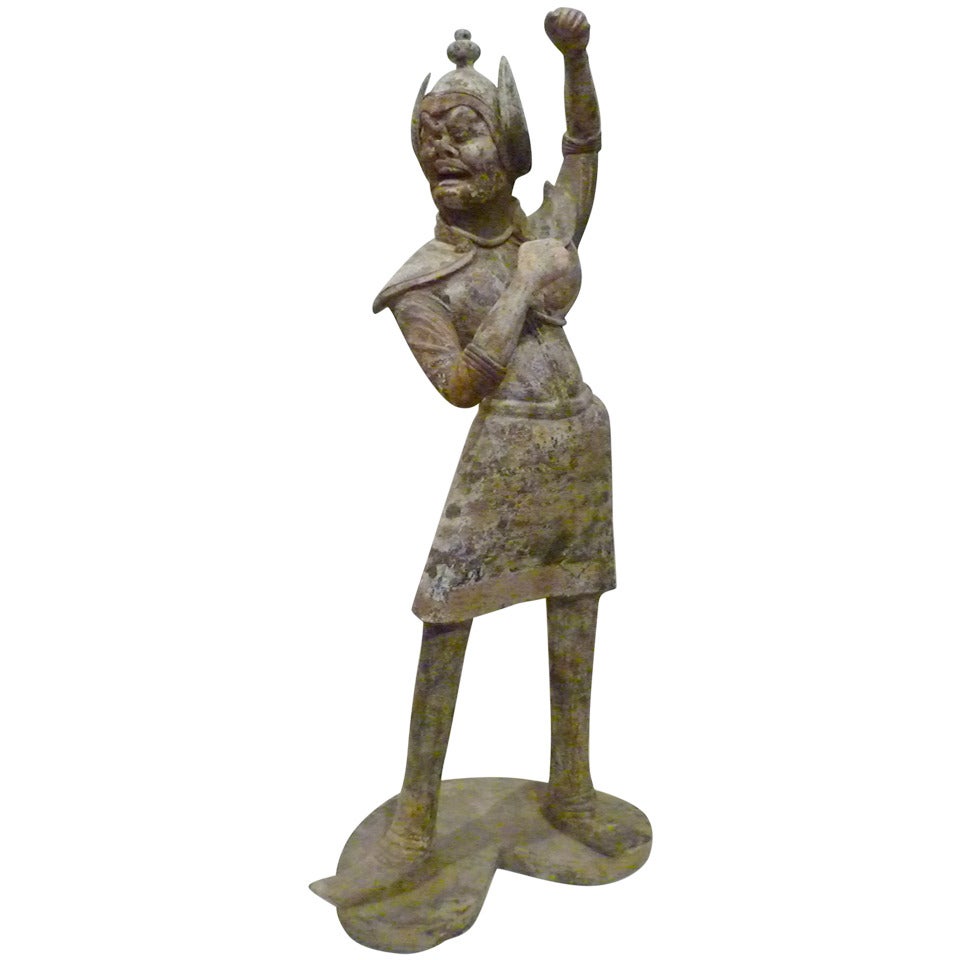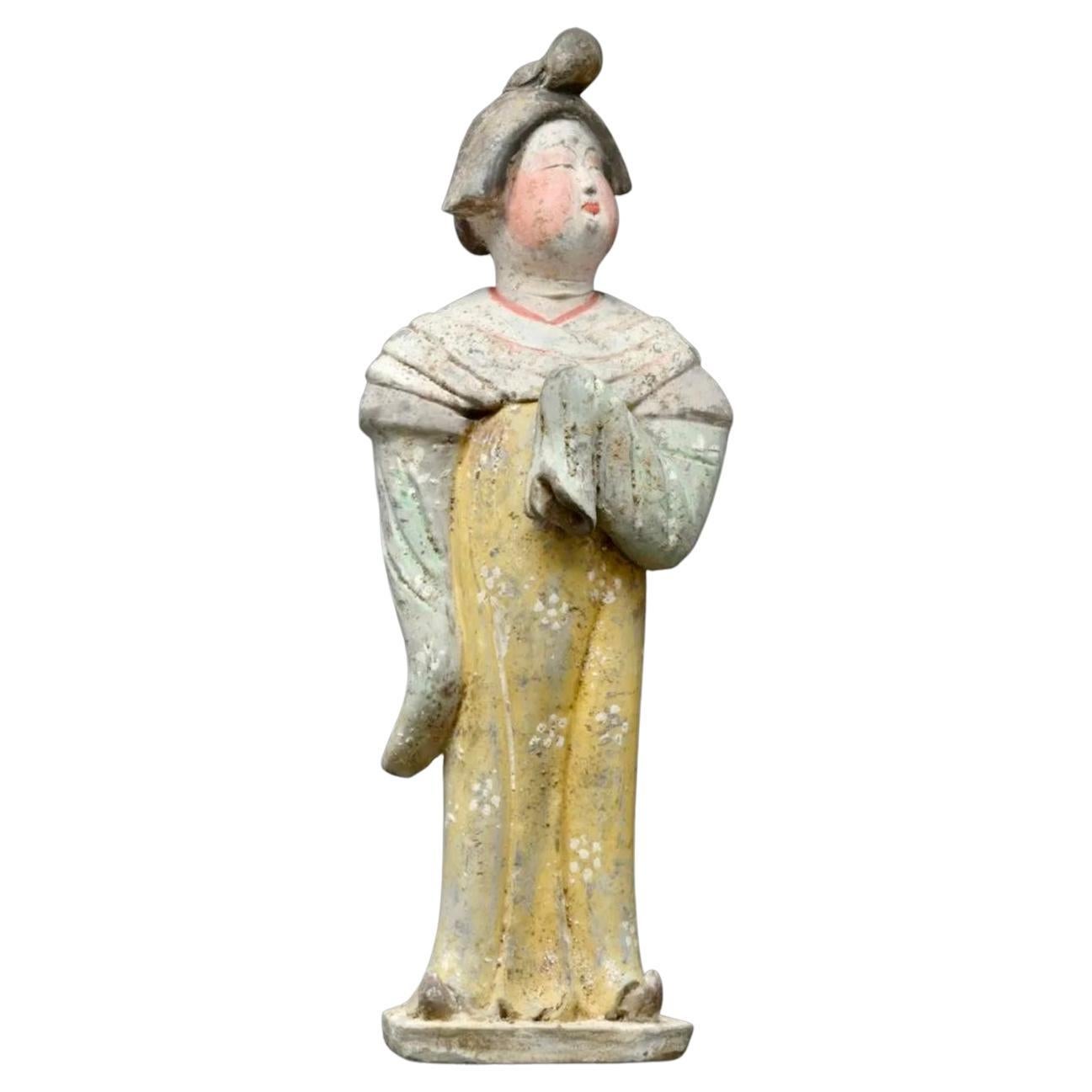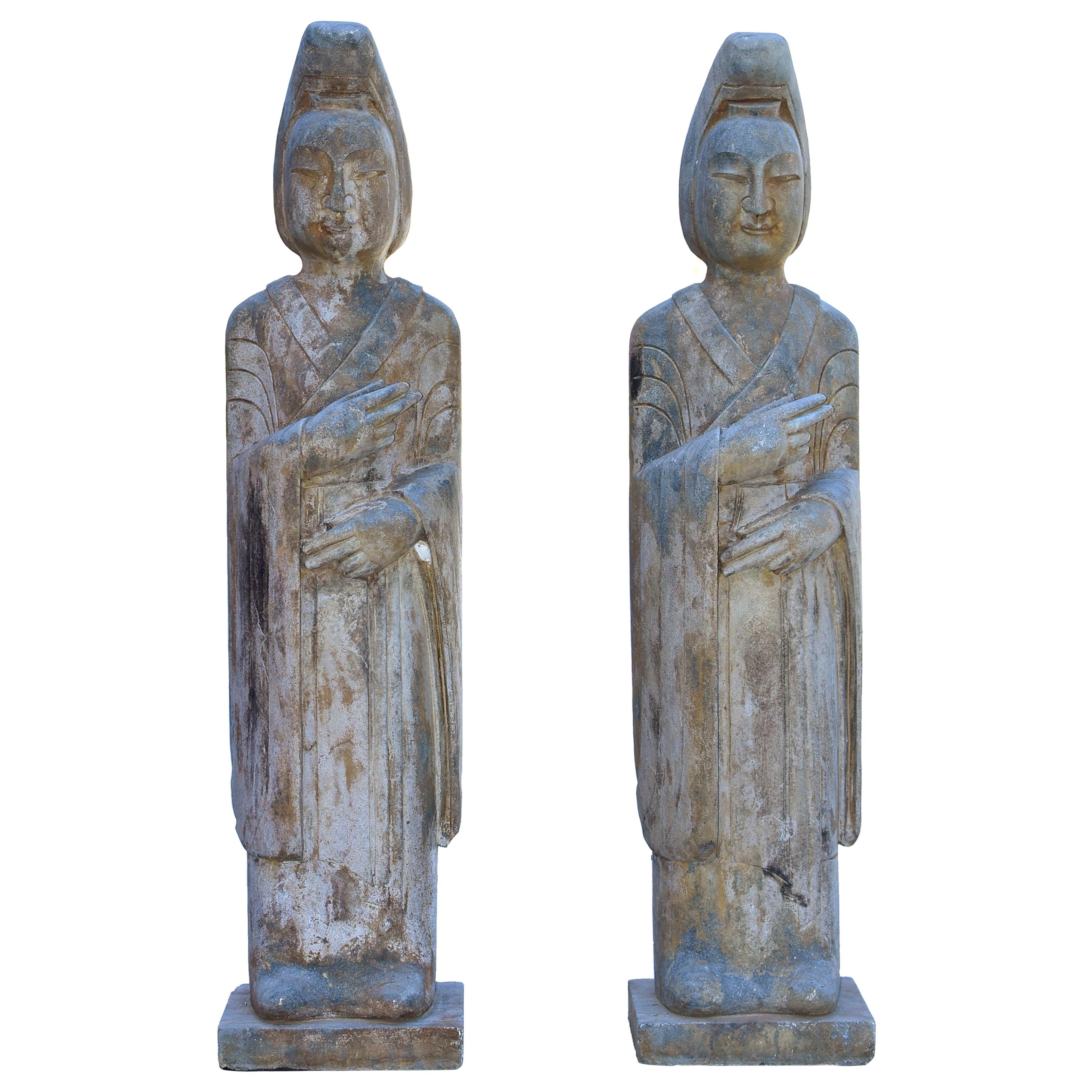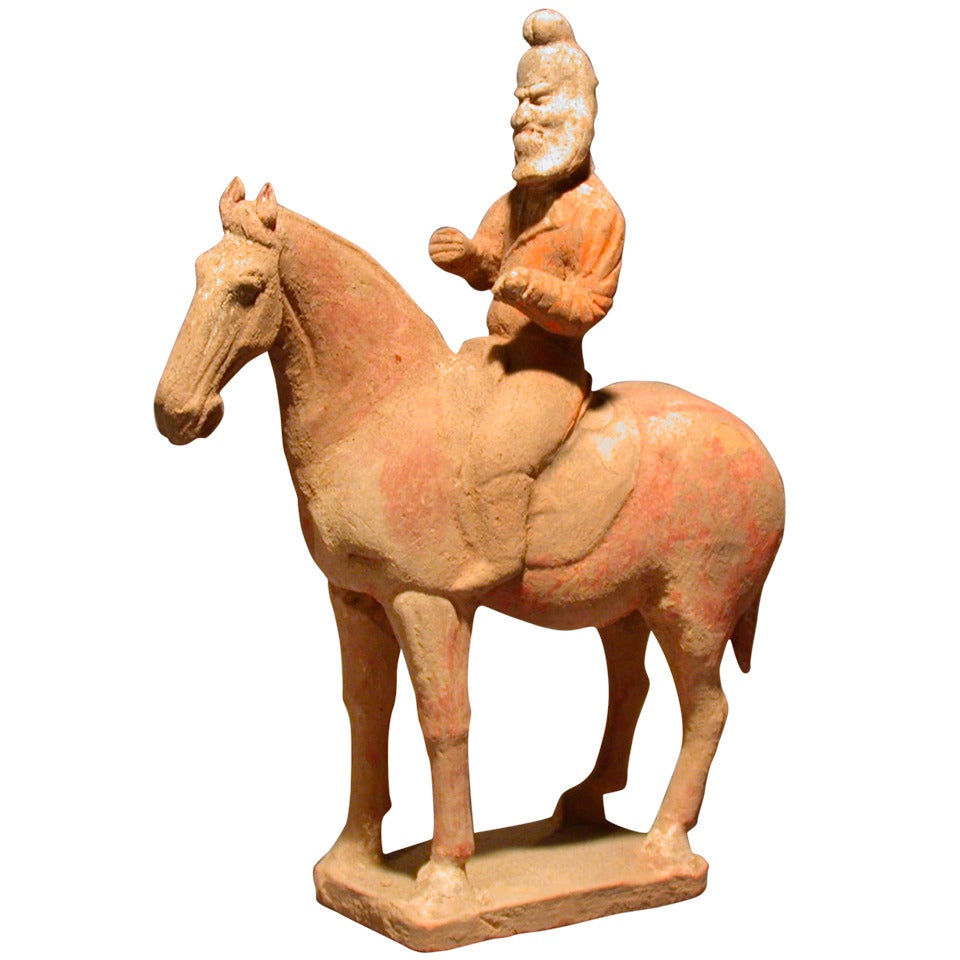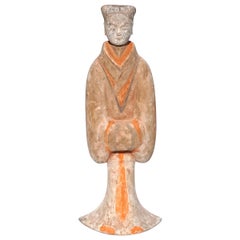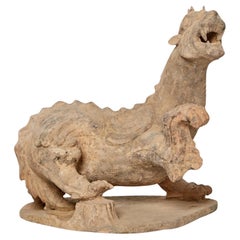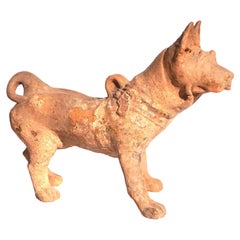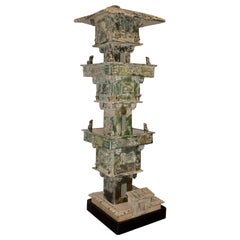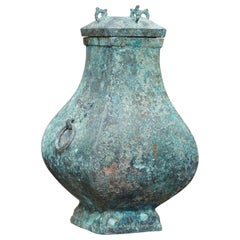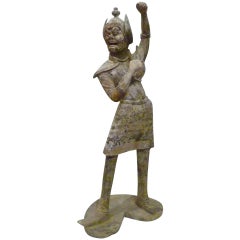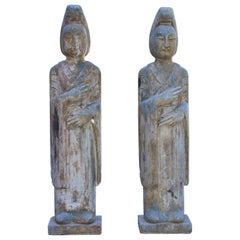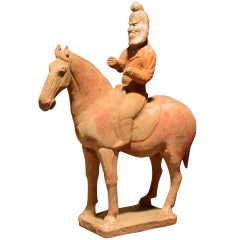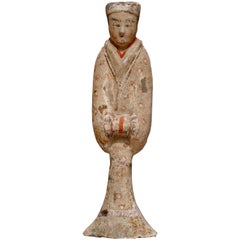
Han Dynasty TL Tested Terra-cotta Court Lady Statue (206BC - 220AD)
View Similar Items
Want more images or videos?
Request additional images or videos from the seller
1 of 10
Han Dynasty TL Tested Terra-cotta Court Lady Statue (206BC - 220AD)
$9,000List Price
About the Item
- Dimensions:Height: 18 in (45.72 cm)Width: 5.9 in (14.99 cm)Depth: 3.25 in (8.26 cm)
- Style:Han (Of the Period)
- Materials and Techniques:Pottery,Fired
- Place of Origin:
- Period:
- Date of Manufacture:Circa Year 1
- Condition:Wear consistent with age and use. With restorations, chips and losses.
- Seller Location:Dallas, TX
- Reference Number:1stDibs: LU1774213876741
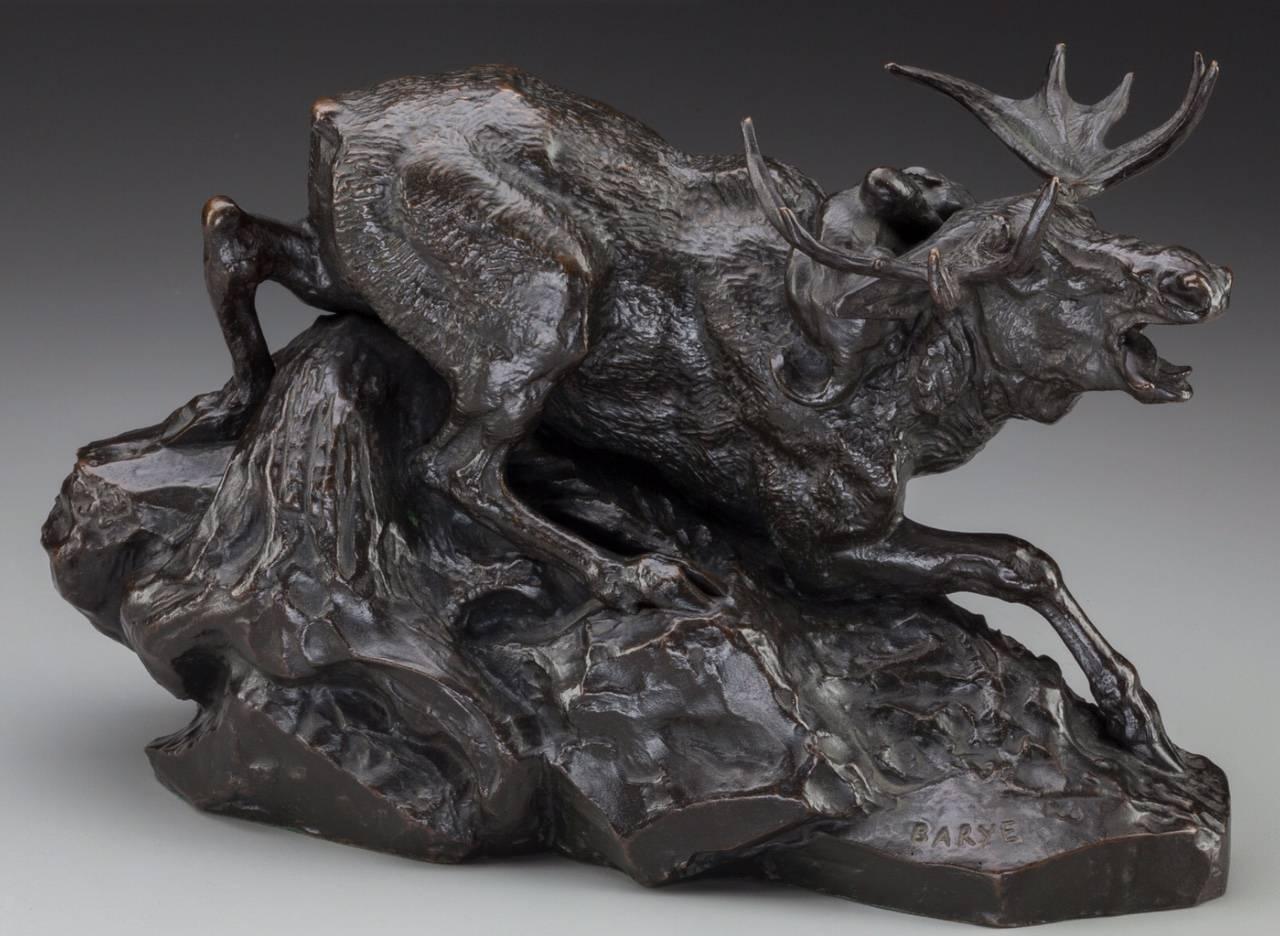
About the Seller
4.9
Gold Seller
Premium sellers maintaining a 4.3+ rating and 24-hour response times
Established in 2000
1stDibs seller since 2015
444 sales on 1stDibs
Typical response time: 12 hours
Authenticity Guarantee
In the unlikely event there’s an issue with an item’s authenticity, contact us within 1 year for a full refund. DetailsMoney-Back Guarantee
If your item is not as described, is damaged in transit, or does not arrive, contact us within 7 days for a full refund. Details24-Hour Cancellation
You have a 24-hour grace period in which to reconsider your purchase, with no questions asked.Vetted Professional Sellers
Our world-class sellers must adhere to strict standards for service and quality, maintaining the integrity of our listings.Price-Match Guarantee
If you find that a seller listed the same item for a lower price elsewhere, we’ll match it.Trusted Global Delivery
Our best-in-class carrier network provides specialized shipping options worldwide, including custom delivery.More From This Seller
View AllLarge Han Dynasty Terra-cotta Court Lady Figure TL Tested
Located in Dallas, TX
Huge Han Dynasty Terracotta figure Of A Court Lady. TL Test conducted by Ralf Kotalla Laboratory in Germany. Report included.
Height: 29...
Category
Antique 15th Century and Earlier Chinese Han Figurative Sculptures
Materials
Terracotta
Han Dynasty Pottery Mythical Bixie Beast TL Tested
Located in Dallas, TX
A Large Chinese Pottery Mythical Creature Figure from the Han Dynasty
China. Western Han Dynasty Circa 25 - 220
TL tested estimated age 1800 years old (+/- 200) by Artemis Testing ...
Category
Antique 15th Century and Earlier Chinese Han Animal Sculptures
Materials
Pottery
Large Han Dynasty Pottery Sculpture of a Dog TL Tested
Located in Dallas, TX
Han Dynasty life size Terracotta sculpture of a dog. TL Tested
Buried in a tomb for thousands of years; this mingqi companion has decided to come back and accompany the living. I’m actually taking a liking to this pup; most probably a fierce pit bull...
Category
Antique 15th Century and Earlier Chinese Han Animal Sculptures
Materials
Terracotta
Han Dynasty Green Glazed Archers Watch Tower Oxford TL Tested
Located in Dallas, TX
Monumental Pottery Watch Tower in Green Glaze; Han Dynasty (2016 BC -AD 220)
Earthenware three-storied pavilion from the Eastern Han Dynasty. Each of the...
Category
Antique 15th Century and Earlier Chinese Han Ceramics
Materials
Terracotta
Han Dynasty Pottery Sculpture of a Winged Lion Bixie Mythical Beast TL Tested
Located in Dallas, TX
A Large Han Dynasty Terracotta sculpture of a Mythical Beast. TL Tested
I cant emphasize how rare this item is and predict it will not last long. The condition is extraordinary with...
Category
Antique 15th Century and Earlier Chinese Han Animal Sculptures
Materials
Pottery
Tang Dynasty Museum Fat Lady and Child TL Tested
Located in Dallas, TX
Tang Dynasty polychromed fat lady with child in arm. TL Tested
Terracotta, pottery with traces of orange and green paint
Sui to Tang Dynasty (581-618)
Measures: Height: 20.2 inches (51cm)
Width: 9.45 inches (24cm)
Guaranteed Authentic with corresponding TL Thermoluminescence Test conducted by Artemis Testing Lab Included in the sale of this item.
Condition: Excellent with loss to pinky and wear commensurate of age.
This rare and outstanding ceramic court attendant was made during what many consider to be China’s Golden Age, the T’ang Dynasty. It was at this point that China’s outstanding technological and aesthetic achievements opened to external influences, resulting in the introduction of numerous new forms of self-expression, coupled with internal innovation and considerable social freedom. The T’ang dynasty also saw the birth of the printed novel, significant musical and theatrical heritage and many of China’s best-known painters and artists. The T’ang Dynasty took control in 618 AD, when the Li family seized power from the last crumbling remnants of the preceding Sui Dynasty. This political and regal regime was long-lived, and lasted for almost 300 years. The imperial aspirations of the preceding periods and early T’ang leaders led to unprecedented wealth, resulting in considerable socioeconomic stability, the development of trade networks and vast urbanisation for China’s exploding population (estimated at around 50 million people in the 8th century AD). The T’ang rulers took cues from earlier periods, maintaining many of their administrative structures and systems intact. Even when dynastic and governmental institutions withdrew from management of the empire towards the end of the period – their authority undermined by localised rebellions and regional governors known as jiedushi –the systems were so well-established that they continued to operate regardless. The artworks created during this era are among China’s greatest cultural achievements. It was the greatest age for Chinese poetry...
Category
Antique 15th Century and Earlier Chinese Tang Figurative Sculptures
Materials
Terracotta
You May Also Like
Fanghu Han Dynasty 206BC-220AD Chinese Bronze Ritual Wine Vessel Jug & Cover
Located in West Sussex, Pulborough
We are delighted to offer for sale this exceptionally important and highly collectable museum quality original Chinese bronze ritual wine vessel and...
Category
Antique 15th Century and Earlier Chinese Han Antiquities
Materials
Bronze
$28,912 Sale Price
30% Off
Fine Tang Dynasty Pottery Statue of Guardian, TL Tested
Located in Greenwich, CT
A very refined, unusual and important lively modeled pottery statue of guardian, dramatic and powerful pose, early Tang dynasty, 618-907AD, comes with Oxford authentication TL test...
Category
Antique 15th Century and Earlier Chinese Tang Sculptures and Carvings
Materials
Terracotta
Pair Vintage Stone Court Lady Statues 48"
Located in Somis, CA
A pair of 20th century solid stone court lady statues. The full face is with long slender eyes under arched brows flanking a strong straight nose. Hair held...
Category
20th Century Chinese Han Sculptures and Carvings
Materials
Stone
$6,500 Sale Price / set
71% Off
Unusual Tang Dynasty Persian Horse Rider Statue, Silk Road Trader, TL Tested
Located in Greenwich, CT
A fine and unusual statue of standing horse with a Persian rider. Tang Dynasty (618-907 AD) Silk Road trader from Persia, comes with Oxford authenticati...
Category
Antique 15th Century and Earlier Chinese Tang Sculptures and Carvings
Materials
Terracotta
Pair of Terracotta Han Guards in Polychrome Paint China Han-Dynastie, TL Tested
Located in Salzburg, AT
Pair of terracotta Han guardsmen in polychrome paint China TL tested
Pair of rare standing male terracotta sculptures/warriors of the Chinese Han dynasty from the 2nd century BC.
W...
Category
Antique 15th Century and Earlier Chinese Han Figurative Sculptures
Materials
Terracotta, Acrylic
Han Dynasty, Laying Doe Wood Sculpture, China 100AD
Located in PARIS, FR
Superb sculpture of a laying doe from the Chinese Han Dynasty (206BC-220AD). Remainders of polychromic paint, namely red, symbol of good fortune and joy as well as the season of summer, and green, symbol of vigor and vitality and the season of spring. Mounted on base.
A similar sculpture in bronze is kept at the Met Museum with the following description " A low bed, small table, and screen were often the only furnishings in a Han-dynasty room. The floors were generally covered with mats kept in place with weights in the shape of single animals, fighting beasts, or entertainers."
Condition seen in pictures.
Dimensions in cm ( H x L x l ) :
- Sculpture : 35 x 40 x 10
- With base : 45.5 x 44 x 15
The Han Dynasty ruled China from 206 B.C. to 220 A.D. and was the second imperial dynasty of China. It is known for its promotion of Confucianism as the state religion and opening the Silk Road trade route to Europe, permanently altering the course of Chinese history. Han Dynasty art and inventions like paper still influence the world today.
From the Han Dynasty to the present, deer can be found in many materials and media—rock crystal, nephrite, ink on paper, porcelain, cloisonné enamel, jade, bamboo root, textile, bronze, etc.—alone or in groups, among trees and rocks and in various positions. They appear on everyday objects, from boxes to incense burners, incense holders, lamps, mirror holders and the droppers scholars used when they wrote. A symbol of longevity and grace in Chinese mythology, the word deer is pronounced lu, a homonym for emoluments—favors granted to officials. They therefore represent wealth, nobility and success in imperial examinations (civil service exams for selecting candidates for the state bureaucracy in Imperial China).
Deer were the faithful companions of Shu Lao, the god of longevity, and the goddess Magu. They were reputed to live long and to be the only creature able to find the mushroom of immortality, linghzhi. Although its spots are different, deer are sometimes confused or associated with stags, a Manchu hunting trophy whose antlers served to make prestigious furniture. (La Gazette Drouot, Claire Papon)
For the colours found on this piece, in Chinese culture, red symbolizes good fortune and joy. Green, symbolizes the spring when everything is brimming over with vigor and vitality.
The Han Dynasty (206 B.C. to 220 A.D.) continued the Qin Dynasty’s use of dark colours, but incorporated red. During the earlier years, or Western Han Dynasty, ordinary people wore red while court dress was black. Shoes were red in color. The clothing worn for sacrificial rites was black edged with red. In the later Eastern Han Dynasty, red symbolized the dynasty’s “fire Virtue” and became predominant. Court dress was red. Sacrificial rites called for a red-edged white layer under robes with red socks...
Category
Antique 15th Century and Earlier Chinese Han Mounted Objects
Materials
Wood
